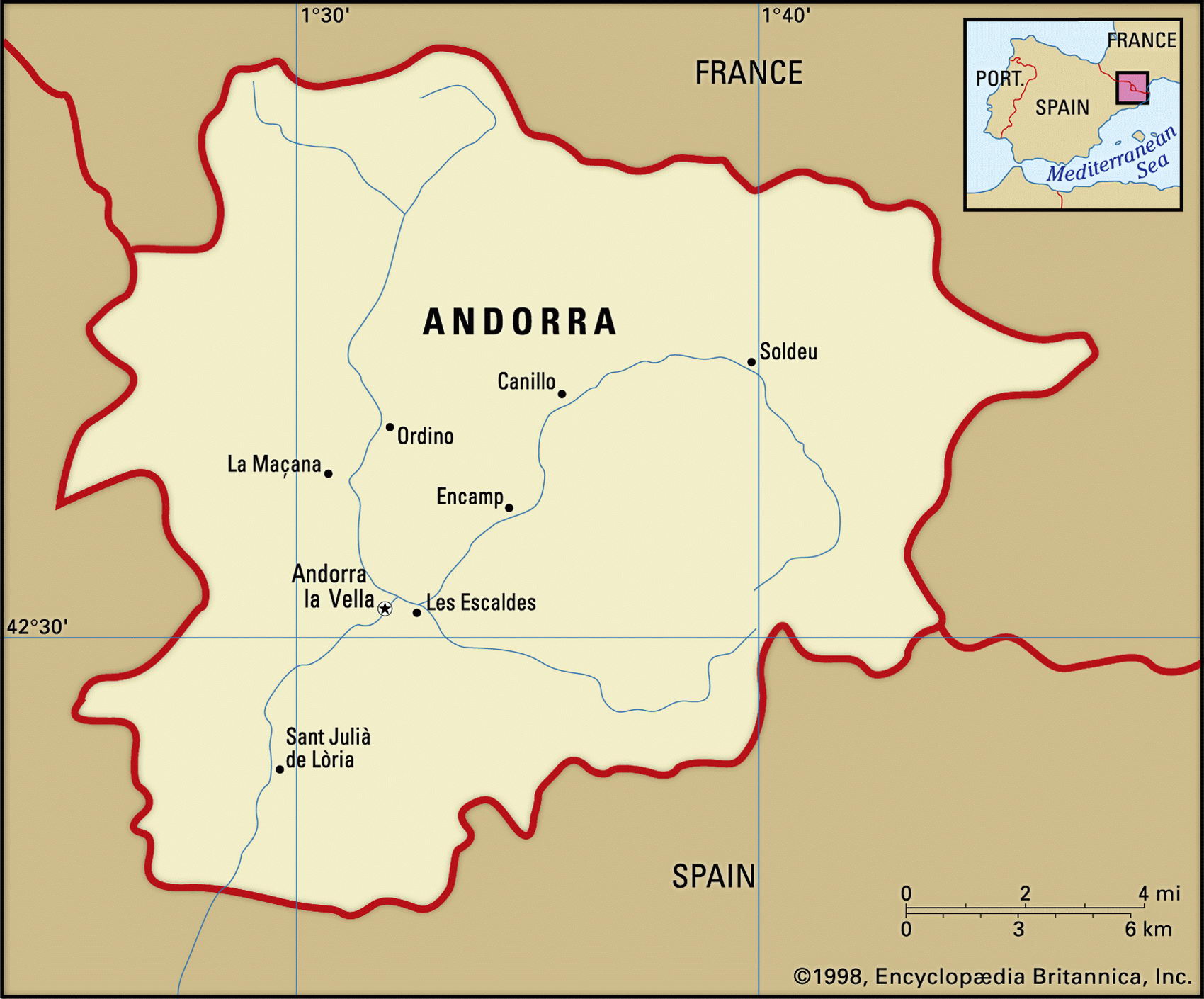Map of Andorra and geographical facts
Map of Andorra. Where Andorra on the world map
Map of Andorra with cities. Where Andorra is on the world map. The main geographical facts about Andorra - population, country area, capital, official language, religions, industry and culture.

Andorra Fact File
Official name Principality of Andorra
Form of government Co-principality with single legislative body (General Council of the Valleys)
Capital Andorra la Vella
Area 450 sq km (1 74 sq miles)
Time zone GMT + 1 hour
Population 68,400
Projected population 2015 80,000
Population density 152.0 per sq km (393.1 per sq mile)
Life expectancy 83.5
Infant mortality (per 1,000) 4.1
Official language Catalan
Other languages French, Spanish
Literacy rate 100 %
Religions Roman Catholic
Ethnic groups Spanish 61 %, Andorran 30%, French 6%, other 3%
Currency Euro
Economy Tourism, tobacco production, financial services
GNP per capita US$ 19,000
Climate Temperate; snowy winter, warm summers
Highest point Coma Pedrosa 2,946 m (9,665 ft) Map reference Page 293
The tiny landlocked principality of Andorra sits high in the Pyrenees, between France and Spain. From 1278 Andorra's government was shared between France and Spain. For 300 years it was jointly administered by the Bishop of Urgel in Spain and the Count of Foix in France. In the sixteenth century sovereignty passed to the French king and, after the French Revolution of 1789, to the French head of state. Today the Bishop of Urgel and the French president are official chiefs of state. Since 1993, however, when the first democratic elections were held, authority has been vested in a 28-member General Council of the Valleys. France and Spain are responsible for its defence, and both have a representative on the General Council.
Andorra is mountainous with spectacular peaks. The country is snow-covered for six months in winter, but summers are warm and dry. Two south-flowing branches of the River Valira—the Valira del Nord and the Valira d'Orient—flow through a series of valleys and gorges between ranges. They join in the center of the country and flow as one stream into Spain. The Valira is a major source of hydroelectric power.
About one third of the population are citizens of Andorra: the rest are foreign residents, mainly French and Spanish. Almost two-thirds of the population live in the capital and the cities of Les Escaldes and Encamp. Tourism is the mainstay of the economy, and every year there are more than 12 million visitors, mainly skiers. Goods are duty-free in Andorra. This acts as a magnet to tourists and is vital to the economy, as is the sale of hydroelectricity to neighboring Catalonia. Banking services are significant, but there is little secondary industry, apart from cigarette and cigar making. As well as tobacco, some fruit, vegetables, and other crops are grown on the tiny amount of land that can be cultivated. Many of the village-dwellers are small farmers. Their sheep, cattle, and goats graze in the upland meadows during summer.